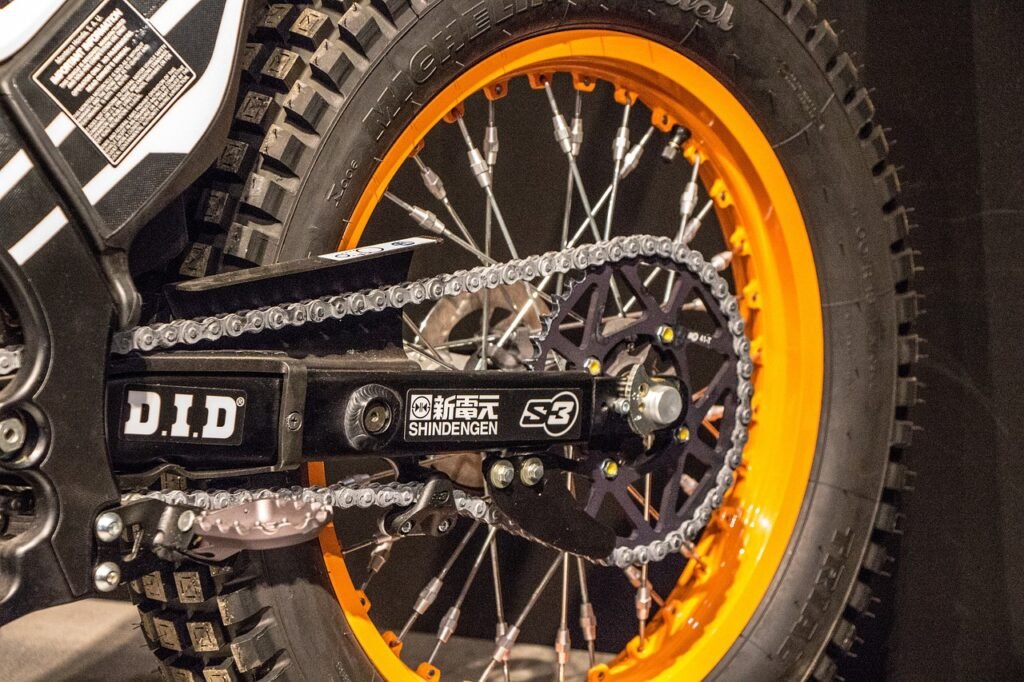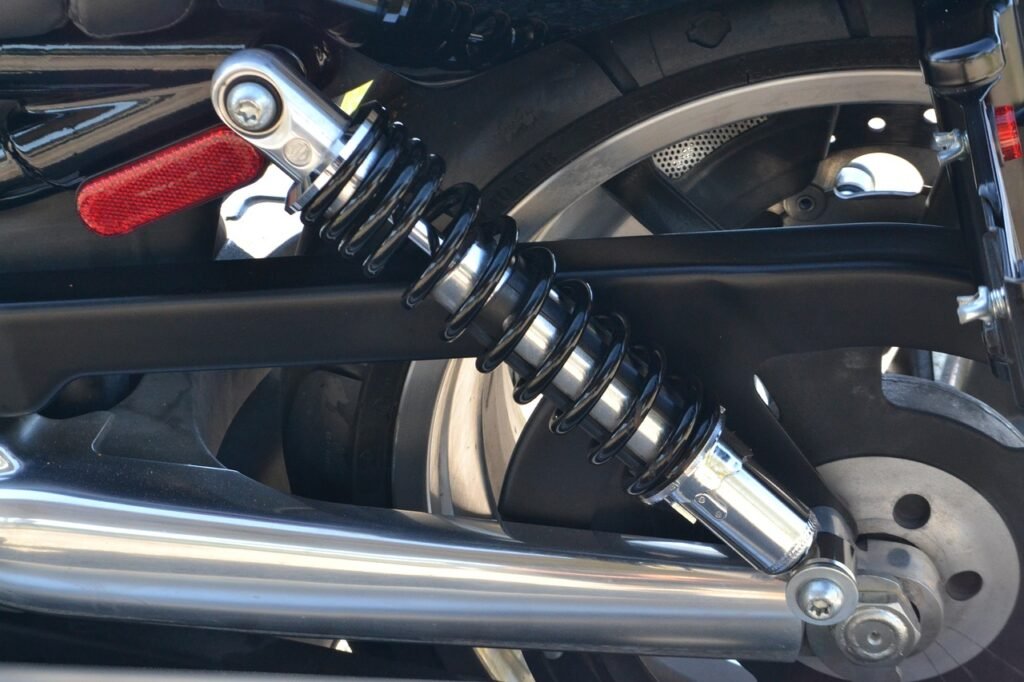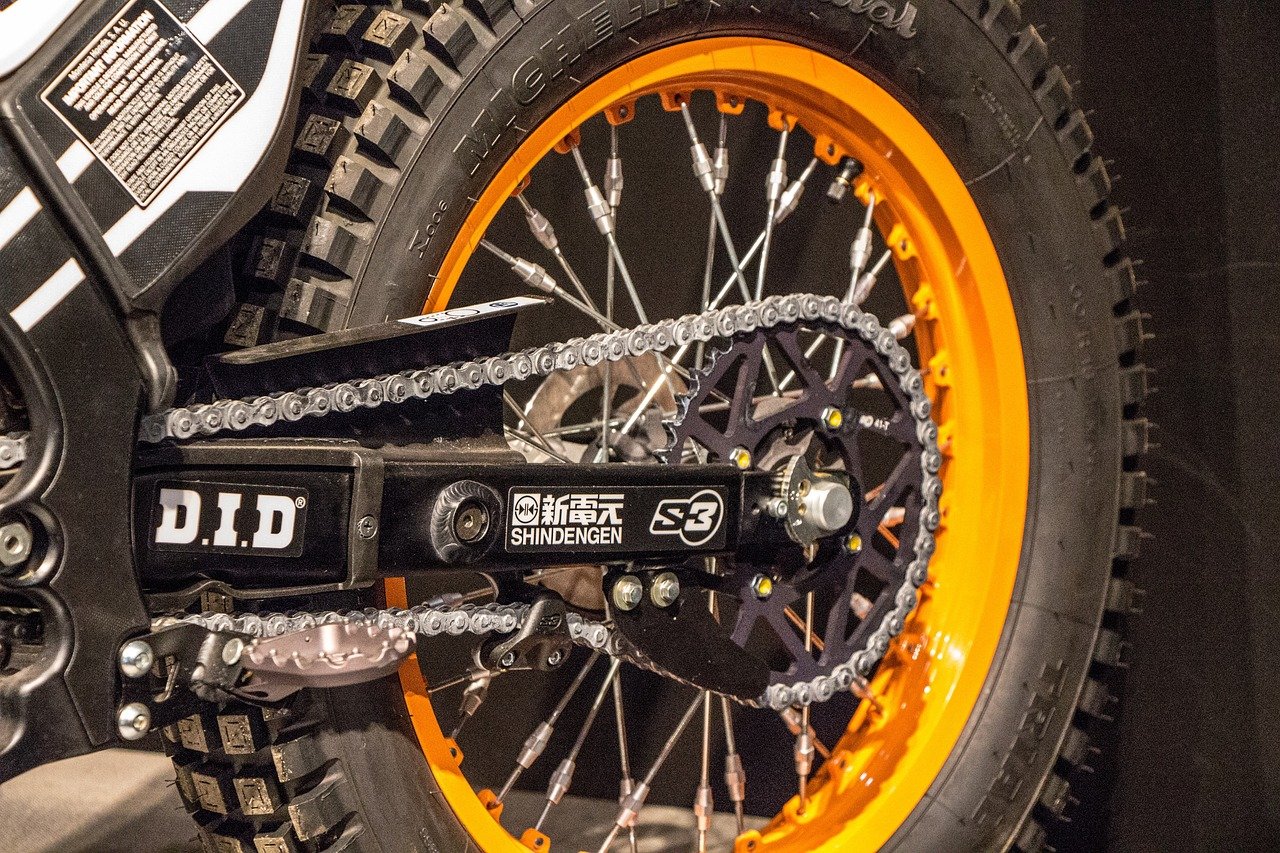Why Regular Bike Check-Ups are Essential
Taking care of your bike is crucial for a smooth and enjoyable riding experience. Regular bike check-ups are not only essential but also the key to keeping your bike in top shape. By adhering to a regular check-up schedule, you can identify potential problems early on and prevent them from escalating into major issues. This article explores the importance of regular bike check-ups and provides you with a comprehensive schedule to ensure your bike remains in optimal condition. So, grab a cup of coffee, sit back, and let’s delve into the world of bike maintenance!

This image is property of pixabay.com.
Importance of Regular Bike Check-Ups
Enhances Safety
Regular bike check-ups play a vital role in ensuring your safety while riding. By inspecting various components of your bike, including brakes, tires, and gears, you can identify any potential issues that could compromise your safety on the road. Checking the integrity of the frame and fork can help prevent accidents caused by structural failure. Furthermore, a thorough check-up allows you to address any worn-out or faulty parts, reducing the risk of accidents and injuries.
Increases Bike Performance
A well-maintained bike not only ensures your safety but also enhances its overall performance. During a check-up, you can evaluate the condition of your bike’s drivetrain, pedals, and cranksets. Properly lubricating the chain and ensuring the gears are properly adjusted can greatly improve the bike’s efficiency and smoothness while riding. Investing time in regular check-ups will allow you to identify areas where performance can be improved and make the necessary adjustments to optimize your biking experience.
Extends the Lifespan of Your Bike
Regular check-ups significantly extend the lifespan of your bike. Through thorough inspections and maintenance, you can detect and address any underlying issues before they worsen and cause irreversible damage. By properly caring for your bike and replacing worn-out parts in a timely manner, you can prolong the life of your bike and avoid costly repairs or having to replace the entire bike prematurely. Just like any other piece of machinery, regular check-ups are essential for keeping your bike in top condition for years to come.
When to Schedule a Bike Check-Up
After Long Periods of Inactivity
If your bike has been sitting idle for an extended period, such as during the winter months or a long vacation, it is crucial to schedule a check-up before hitting the road again. During the inactive period, various components of your bike may experience deterioration or damage. By bringing your bike to a professional for a check-up, you can ensure that it is safe and in good working order before you start riding again.
Before and After Long Rides or Tours
Before embarking on a long ride or tour, it is advisable to schedule a check-up to make sure everything is in proper condition. Long rides place additional stress on your bike, and it is crucial to ensure that it can handle the demands of the journey. A check-up before the ride allows you to address any potential issues and make the necessary adjustments or repairs. Additionally, a post-ride check-up will help you identify and address any issues that may have arisen during the trip, ensuring your bike is ready for future adventures.
Components to Check during a Bike Check-Up
Tires and Wheels
The condition of your tires and wheels is crucial for a safe and smooth ride. Check for any signs of wear, such as balding or cracking, and ensure that the tire pressure is at the recommended level. Inspect the wheels for any loose spokes or damage. Properly inflated tires and well-aligned wheels will enhance both safety and performance.
Brakes
Well-functioning brakes are essential for your safety on the road. During a check-up, inspect the brake pads for wear and replace them if necessary. Check the brake cables and housing for any signs of damage or fraying. Properly adjusted and maintained brakes ensure reliable stopping power, allowing you to ride with confidence.
Gears and Drivetrain
The gears and drivetrain are responsible for transferring power from your legs to the wheels. Ensure that the gears shift smoothly and accurately through all the available options. Check for any signs of wear or damage to the chainrings, cassettes, and derailleurs. Proper lubrication of the drivetrain will reduce friction and optimize performance.
Chain and Lubrication
The chain is a critical component that requires regular attention. Check for any signs of wear, such as rust or stretching, and replace it if necessary. Proper lubrication of the chain will reduce friction and ensure smooth pedaling. Be sure to use a lubricant appropriate for your riding conditions.
Frame and Fork
Inspect the frame and fork for any cracks or damage. A compromised frame can lead to catastrophic failure while riding. By detecting any structural issues early on, you can address them promptly, ensuring the safety and longevity of your bike.
Handlebars and Stem
Check the handlebars and stem for any signs of damage, such as cracks or corrosion. Make sure they are securely tightened to avoid any accidents caused by loose or wobbly components.
Saddle and Seatpost
Evaluate the condition of the saddle and seatpost. Check for any signs of wear or damage and ensure they are securely fastened. A wobbly saddle or loose seatpost can affect your stability and comfort while riding.
Pedals and Crankset
Inspect the pedals and crankset for any signs of wear or damage. Ensure that they are securely attached and functioning properly. Loose or damaged pedals can cause instability and compromise your safety.
Cables and Housing
Check the cables and housing for any signs of damage or fraying. Ensure that they are properly lubricated and that the cable tension is adjusted correctly. Well-maintained cables and housing ensure smooth shifting and reliable braking.
Accessories and Extras
During a check-up, inspect any additional accessories or extras that you may have on your bike, such as lights, racks, or fenders. Ensure that they are properly attached and functioning as intended.
Benefits of a Professional Bike Check-Up
Expert Knowledge and Experience
One of the primary benefits of a professional bike check-up is the access to expert knowledge and experience. Bike mechanics have extensive knowledge of various bike components and their potential issues. They can quickly identify any problems and recommend the most appropriate solutions, ensuring that your bike is in optimal condition.
Specialized Tools and Equipment
Professional bike shops have specialized tools and equipment that are essential for a comprehensive check-up. These tools enable mechanics to accurately assess the condition of your bike’s components, make precise adjustments, and perform any necessary repairs. This specialized equipment ensures thorough inspections and optimal maintenance.
Thorough Inspection and Diagnosis
During a professional check-up, mechanics will conduct a thorough inspection of every component of your bike. They will identify any areas of concern and diagnose any potential issues. A comprehensive assessment ensures that no potential problems go unnoticed, allowing for proactive maintenance and repair.
Proper Adjustment and Maintenance
Professional mechanics are trained to make precise adjustments to various components of your bike. Proper adjustment of brakes, gears, and other critical parts ensures optimal performance and safety. Additionally, professional maintenance, such as lubricating moving parts and replacing worn-out components, helps extend the lifespan of your bike.
Recommendations for Repairs and Upgrades
After a thorough check-up, professional mechanics will provide you with recommendations for any necessary repairs or upgrades. They can help you prioritize these recommendations based on your budget and riding needs. Their expertise ensures that your bike receives the appropriate upgrades and repairs to enhance its performance and longevity.

This image is property of pixabay.com.
DIY Bike Check-Up Tips
Use a Bike Stand or Work Stand
Investing in a bike stand or work stand makes it easier to perform a thorough check-up. It allows you to elevate the bike off the ground, providing better access to its components. A stable stand ensures that your bike is secure while conducting inspections or making adjustments.
Inspect for Wear and Tear
Carefully inspect all components of your bike for any signs of wear and tear. Look for cracks, rust, fraying, or any other damage that may compromise the integrity or functionality of the parts. Addressing these issues promptly will prevent further damage and help maintain optimal performance.
Check Tire Pressure and Tread
Ensure that your tires are properly inflated to the recommended pressure. Low tire pressure can affect your ability to control the bike and increase the risk of punctures. Additionally, inspect the tire tread for any signs of excessive wear. Replace worn-out tires to maintain traction and minimize the risk of accidents.
Ensure Adequate Brake Performance
Check the brake pads for wear and replace them if necessary. Ensure that the brake levers engage smoothly and provide sufficient stopping power. Adjust the brake cable tension if needed. Properly functioning brakes are crucial for your safety, and addressing any issues promptly is essential.
Clean and Lubricate the Chain
Clean the chain thoroughly, removing any dirt or debris. Apply an appropriate lubricant to ensure smooth movement. Excessive dirt or lack of lubrication can lead to premature wear of the drivetrain components and reduce performance. Regular cleaning and lubrication will help maintain the chain’s functionality and extend its lifespan.
Inspect Frame for Cracks and Damage
Carefully inspect the frame for any cracks or damage. Use a flashlight to examine hard-to-reach areas. Cracks in the frame can compromise its structural integrity and lead to accidents. Consult a professional if you notice any signs of damage or suspect a compromised frame.
Check and Tighten Bolts and Components
Inspect all bolts and components on your bike, such as handlebars, stem, and pedals, to ensure they are properly tightened. Loose components can compromise your safety and affect the bike’s performance. Using a torque wrench, if available, can help ensure the correct tightness of the bolts.
Test Ride and Verify Bike Performance
After completing the check-up and making any necessary adjustments, take your bike for a test ride. Pay attention to the overall feel and performance of the bike. Test the brakes, gears, and steering responsiveness. A successful test ride confirms that your bike is in proper working order and ready for the road.
Consequences of Neglecting Bike Check-Ups
Increased Risk of Accidents and Injuries
Neglecting regular bike check-ups can increase the risk of accidents and injuries. Faulty brakes, worn-out tires, or a compromised frame can lead to unexpected failures while riding, resulting in accidents. By neglecting check-ups, you are putting your safety and the safety of others at risk.
Decreased Efficiency and Performance
A neglected bike will experience decreased efficiency and performance. Worn-out parts, lack of lubrication, and improper adjustments can affect your ability to pedal smoothly and shift gears accurately. Diminished performance can lead to reduced enjoyment while riding and may even discourage you from using your bike altogether.
Premature Wear and Tear
Neglecting regular check-ups will result in premature wear and tear of various components. Lack of maintenance and ignoring early warning signs can lead to accelerated deterioration of brake pads, chain, gears, and other critical parts. This not only affects the bike’s performance but also increases the likelihood of more frequent and costly repairs or part replacements.
Higher Repair Costs
By neglecting regular check-ups, you are more likely to encounter costly repairs. Small issues that could have been identified and addressed during a routine check-up can escalate into major problems if left unattended. Regular maintenance and timely repairs are generally more cost-effective than waiting for a catastrophic failure that requires extensive repairs or parts replacement.

This image is property of pixabay.com.
Finding a Reliable Bike Shop
Ask for Recommendations and Reviews
When looking for a reliable bike shop, ask fellow cyclists or friends for recommendations. Their personal experiences can provide valuable insights into the quality of service you can expect. Additionally, read online reviews to gather more information about the reputation and customer satisfaction of different bike shops in your area.
Check for Professional Certifications
Look for bike shops that employ certified mechanics. Professional certifications, such as those from the Bicycle Mechanic Certification Institute (BMCI) or the Professional Bicycle Mechanics Association (PBMA), indicate that the mechanics have completed formal training and have the necessary skills to provide reliable and knowledgeable service.
Visit the Shop and Observe
Visit prospective bike shops in person to assess their facilities and equipment. A well-organized and clean workshop indicates attention to detail and professionalism. Observe how the mechanics interact with customers and how efficiently they execute their tasks. A well-run shop with competent staff is more likely to provide quality service.
Inquire about Services and Pricing
Contact bike shops and inquire about the specific services they offer. Determine whether they provide comprehensive check-up and maintenance options that align with your needs. Additionally, ask about their pricing structure to ensure it fits within your budget. Comparing the services and prices of different bike shops will help you make an informed decision.
Evaluate Customer Service Skills
Pay attention to the customer service skills of the bike shop staff. Friendly and knowledgeable staff members who are willing to go the extra mile to answer your questions and provide explanations demonstrate a commitment to customer satisfaction. A bike shop with excellent customer service will not only provide quality maintenance but also ensure a positive overall experience.
Cost of Regular Bike Check-Ups
Varies Depending on Location and Shop
The cost of regular bike check-ups can vary depending on your location and the specific bike shop you choose. Factors such as local market rates, overhead costs, and the shop’s reputation may influence the pricing. It is recommended to inquire about the costs upfront and compare them with other shops in your area.
Frequency of Check-Ups
The frequency of check-ups depends on several factors, including your riding habits, the terrain you ride on, and the overall condition of your bike. Generally, it is advisable to have a comprehensive check-up once or twice a year, with additional check-ups before and after long rides or tours. Consider your riding needs and consult with a professional to determine the ideal frequency for your bike.
Extent of Maintenance and Repairs
The cost of check-ups will also depend on the extent of maintenance and repairs needed for your bike. If your bike requires additional maintenance or part replacements, the overall cost will be higher. It is essential to discuss any potential repairs or upgrades with the bike shop beforehand to understand the estimated costs involved.
Conclusion
Regular bike check-ups are crucial for maintaining safety, enhancing performance, and prolonging the lifespan of your bike. By ensuring optimal functionality of each component, you can ride with confidence and enjoy a smooth biking experience. While DIY check-ups are valuable for basic inspections, professional bike check-ups provide expert knowledge, specialized tools, and a comprehensive assessment of your bike’s condition. Neglecting check-ups can lead to accidents, reduced performance, increased wear and tear, and higher repair costs. Therefore, it is important to find a reliable bike shop that can provide quality service and peace of mind. By investing in regular check-ups, you are prioritizing your safety and maximizing the enjoyment of your biking adventures.
